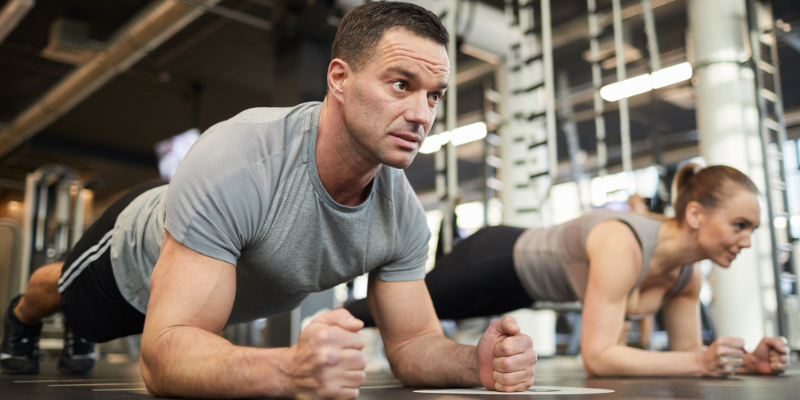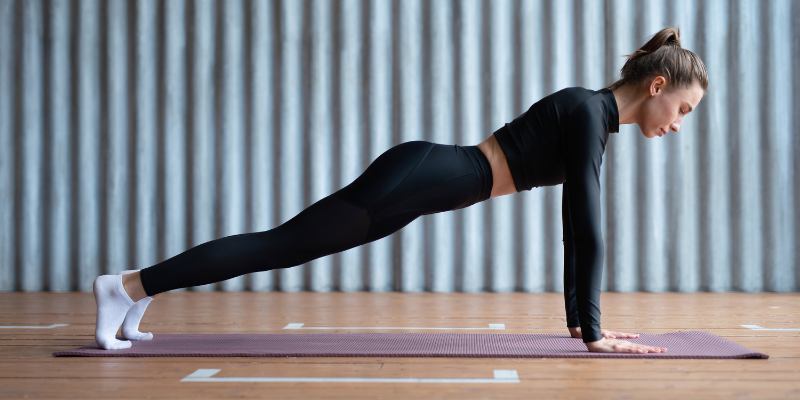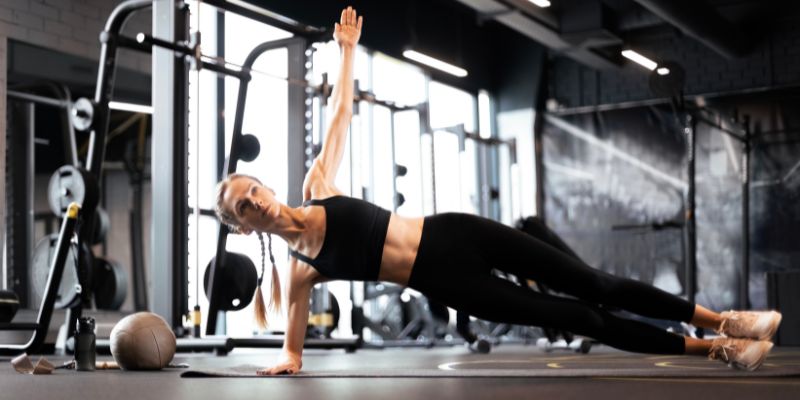Advertisement
How Planks Strengthen Multiple Muscle Groups
Nov 20, 2024 By Korin Kashtan
Planks are a basic yet effective move that targets multiple muscles over the body. Despite their essential nature, planks help develop strength, stability, and endurance. As an exercise focusing on the core, the main muscles targeted in planks are the abdominal muscles, and other muscles also get worked out, including the shoulders, the back, the glutes, and the legs. Keeping a plank position works the entire body. Hence, the exercise is efficacious in improving postures, among other benefits such as better balance and functional strength. Whether you are a newbie or an advanced-level athlete, adding planks to your workout regimen can improve your gains and build a more robust and stable physique.
Why Planks Are a Full-Body Exercise
It is a misconception to consider Plank poses only to improve the core section of the body. Although they are effective in targeting the rectus abdominis, they quickly engage different muscles of your arms, shoulders, back, glutes, and legs. For instance, in the plank position, you will find it hard to remain still without engaging several muscles in your body, thus increasing strength, stability, and endurance. Now, let us look in detail at the main muscle groups that are trained by performing Plank.
Core Muscles: The Primary Target
Due to the emphasis on the core region, planks are exercises everyone willing to work on this region should consider doing.
Rectus Abdominis
The tum muscles, commonly called the six-pack or the rectus abdominis, bend the spine. These muscles are used when maintaining the plank position to prevent the body from sagging in the lower back or raising the hips.
Transverse Abdominis
The transverse abdominis is found within the layers of the abdominal wall and can be very effective in supporting the spine and pelvis. While in the plank position, this muscle effectively helps manage posture and body positioning, leading to the formation of a lean and firm torso.
Obliques
Planks also target the internal and external obliques found on the sides of the abdomen, which assist in rotation, among other movements. The core helps stabilize the spine, giving extra support to the torso.
Core Benefit:
Strengthening these core muscles helps improve balance, posture, and overall stability. Its also essential for preventing lower back pain and injuries.

Upper Body Muscles Engaged in Planks:
Planks aren't just for your core. They're also excellent for building upper body strength. Heres how:
- Deltoids (Shoulders): When holding a plank, the deltoids in your shoulders are actively engaged. They stabilize the shoulder joint up to the carrying angle so that the upper body remains fixed while performing the exercise.
- Pectorals (Chest): The chest muscles maintain the plank position, particularly the pectorals and serratus anterior. These muscles help keep the upper body intact without collapsing.
- Triceps (Back of the Arms): Triceps are also used during a plank exercise. They prevent the elbows from bending and assist in positioning the elbows correctly to the body to keep you upright during-- the supportive arm and plan exercise.
Back Muscles and Postural Support
Planks are one of the best exercises for strengthening the back muscles. These muscles are vital for maintaining correct standing and a healthy spine.
The latissimus dorsi (lats)
The lats are found in the middle part of the back and are used for extra support in the plank position. These muscles help hold the spine in place while relieving the stress on the lower back.
Rhomboids and trapezius (the upper back)
These muscles are activated to pull the shoulder blades down and back. By doing so, the shoulders are prevented from rounding forward. Such movements are beneficial in stabilizing the body during a plank and improving its overall position.
Erector spinae (lower back)
Erector spinae, comprising some muscles, attach along the spinal cord and help keep the back flat, especially during planking. Well-developed erector spinae muscles allow for better spine support and are important in the management of low back pain.
Advantage in Back Muscles:
Finding back exercises, especially the Plank, is a plus as it trains the muscles that extend the back, preventing hunching and lowering the chances of injury to the lower back due to almost every activity now.

Lower Body Muscles Engaged When Planking
Although they may appear to be upper-body exercises, they engage the lower body muscles to an appropriate level for balance and maintaining shape.
Quadriceps (anterior thigh)
The conclusion explains that quads work in a rigid leg position. Placing oneself into a plank with legs tucked behind the body requires quads to be active for stability and endurance.
Glutes (cheeks)
The glutes' importance in stabilizing the hip must be considered. For instance, when the glutes are contracted during the plank position, the spinal eyelids' tilt is reduced, preventing excessive hip drop.
Hamstrings (posterior thigh)
The hamstrings assist the glutes and quadriceps in controlling the legs and thus limit the movement of the lower body. They also help stop the body's movement while doing a plank exercise.
Common Mistakes and How to Avoid Them
- Sagging Lower Back: Engage your core muscles and avoid excessive hip drop. This will help you prevent injury to your lower spine and increase your core engagement.
- Raised Hips: To effectively engage muscles, draw a straight line from head to heel. Do not extend your hips too high.
- Tense Neck: Try browns to stay calm with their heads and gaze slightly in front of their hands to keep an aligned spine.
Conclusion
There is so much more to planks than just training the core; they work numerous muscles in a full-body workout. They work the whole body, including shoulders, arms, glutes, and legs, which aids in developing endurance, stability, and balance. All these benefits of incorporating the Plank into one's routine are why it effectively improves physical fitness, bodily alignment, and mental fortitude over an extended period. Only the Plank will do if one desires to work out various muscle groups without wasting time on other exercises.







